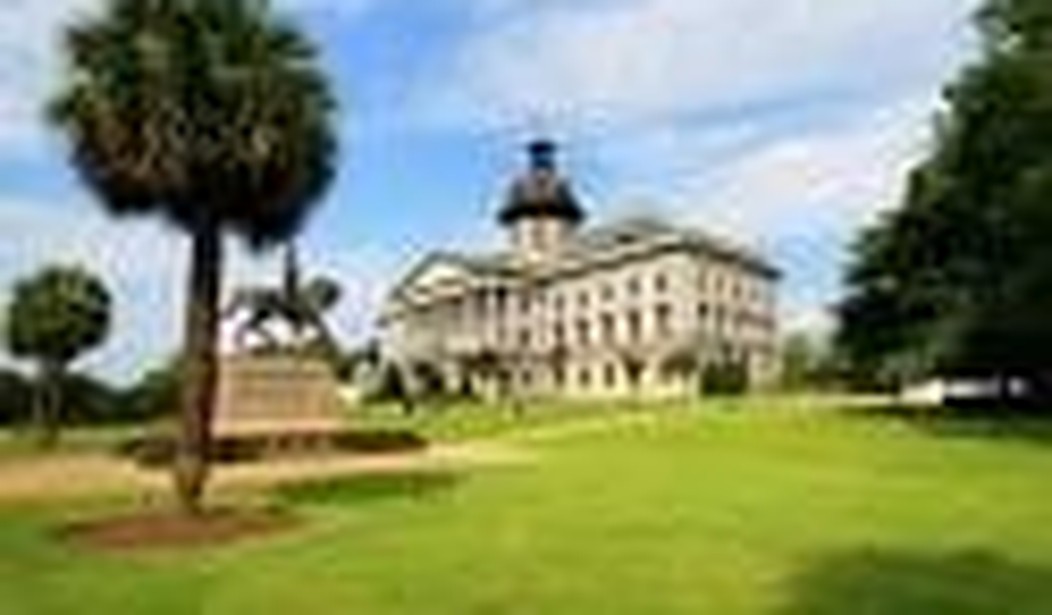Most people outside this state see South Carolina as pure Bush Country — from the winding salt marsh creeks and sandy shores of the lowcountry to the thick forests of pine trees in the Blue Ridge Mountains of the Upstate. And, of course, there is some truth to that.
Republican presidential candidates have owned this state for the past thirty years, and this is the home turf of the late segregationist Strom Thurmond. Plus, the evangelical religious right that helped propel Bush 43 into the White House twice gets a lot of attention from the national media, which love to reinforce the stereotype of bible-thumping, intolerant southern white voters.
But beyond what the national media think they know about the Palmetto State, there’s a growing population of progressive sentiment underneath this state’s rosy red exterior. And that could bubble to the surface this weekend if Barack Obama or Hillary Clinton can generate the kind of interest among voters they claim their campaigns are sparking around the country.
If this weekend’s vote in South Carolina is a slam dunk for either candidate, it could well be the sign of things to come in future primaries and in the general election.
Just consider the changing face of South Carolina that the mainstream media seem to be ignoring. Not only are there large numbers of Northeastern transplants, women and independents in the population centers around South Carolina that weren’t there in past two election cycles, there are also large groups of registered voters of color in economically depressed areas of the state that have generally stayed away from the polls. Meanwhile, the Hispanic population has swelled significantly since President Bush took the White House in 2000.
According to the latest estimates from the Census Bureau in December of 2007, South Carolina was ranked as one of the top ten fastest growing states in the country, enlarging by about 2 percent per year and approaching 5 million residents. The Hispanic population has grown by more than 200 percent in 10 years and could be as large as 500,000 by the end of 2008. No one really knows how many new residents will vote this time around, but if only about half of the those and half of the two million existing voters in the state that have traditionally eschewed the process suddenly decide to make it to the polls, this primary could challenge traditional notions about this state and signal nationwide that white evangelicals and NASCAR dads are seeming less and less relevant.
Consider the voting patterns in South Carolina for the past two presidential elections: In a state that usually only sees about two million votes in a presidential year, an additional 500,000 to 750,000 new voters showing up at the polls could change things dramatically. Traditionally, Republicans have dominated in the most affluent counties, which include the Upstate (Greenville area), the Piedmont (York County near Rock Hill and Charlotte) and along the coast from Myrtle Beach to Hilton Head. At the same time, the most economically challenged counties (and the most ethnically diverse) that make up the Midlands and follow the I-95 corridor from North Carolina to Georgia have gone to Democratic candidates. So generally speaking in presidential elections, South Carolina swings on how the top five population centers of Columbia, Greenville, Charleston, York County and Lexington vote.
For the past 30 years, all of those centers have gone Republican, with the exception of Columbia, which consistently votes Democratic. Charleston has gone to the Republicans but only by a slim margin each time, and the influx of new people and the loss of military bases there raise questions for many observers about this primary and the general election. The top 14 counties by population of non-white voters voted for Al Gore and John Kerry in 2000 and 2004, while the top ten counties by population of white voters (which are also the most affluent) all voted for Bush.
So, it’s no stretch to say that the South Carolina Democratic primary on Saturday could well become a referendum on just how many black folks, Hispanics, independents, women and young people are inspired enough to come out on a cold, rainy winter weekend to cast their vote for the first woman or the first black man in U.S. history with a legitimate shot at the White House.
A massive turnout could become the most tangible indication to date that progressive voters who have abandoned the process in the past might actually be willing to come out in force this time around – not just here but across the country.
Syd Fynch is the blogging identity for the editor of The Palmetto State Progressive, www.palmettoprogressive.com, an independent political blog that has existed in various forms since 1998. Syd is a long-time South Carolina resident and former journalist who has covered politics and government in the Southeast since the Reagan years.









Join the conversation as a VIP Member